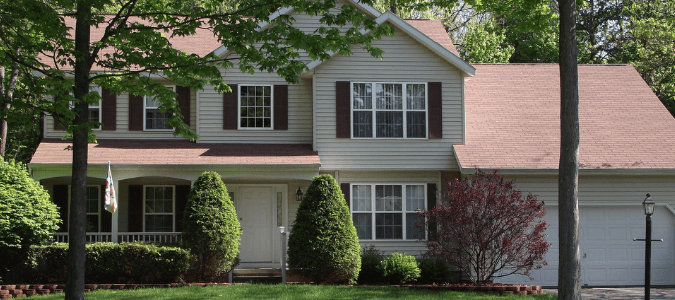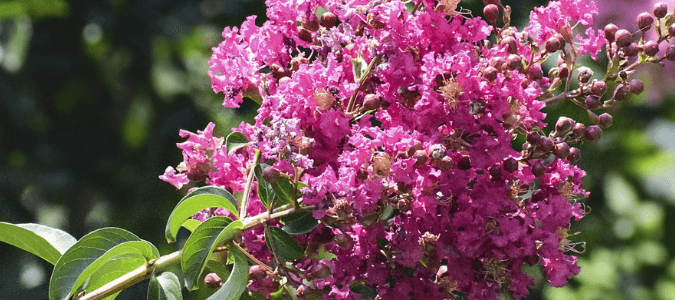Written by Ryan Downer and published on https://www.abchomeandcommercial.com/
Do you want to know why some of the trees in your neighborhood look so vibrant and beautiful? Have you ever found yourself wishing that the trees in your property can achieve that magnificent look?
Trees are among the most magnificent living objects found in nature. They can make any landscape look serene and brimming with life. But as beautiful and majestic as they are, they require a bit of care to maintain their appearance. And one of the maintenance processes that a tree requires is pruning.
Table of Contents
Benefits Of Pruning For Healthy Plant Growth

Trees might be the oldest, largest living organisms on Earth, but they’re not invincible. For a tree to live a long, healthy life in an urban environment, these plants need some human assistance.
Outside of their natural growing environment in the wild, trees often require pruning for them to improve clearance, develop a durable structure and maintain their aesthetics.
Pruning helps a plant exhibit its most desirable attributes. Many plants—including spring-flowering plants like spirea, viburnums, weigela and strawberry bush, as well as summer-flowering plants like roses, hibiscus and crape myrtle—stand to benefit greatly from proper pruning.
How so?
Pruning promotes health by enabling you to get rid of sickly or diseased plant parts. Trimming also helps with insect management. Lastly, removing dead or dying branches or stems enhances the beauty of your plants.
Here’s the bad news: improper pruning could potentially cause severe damage that can, in the most severe cases, contribute to the death of your plant. At the very least, pruning will create wounds which can have a profound impact on plant growth and health.
In other words, you really have to know what you’re doing so you can realize the benefits of pruning. You can look through some tree pruning tips to help you better understand the amount of work that goes into this routine task.
Experienced tree trimmers utilize only proper, safe pruning practices. After reading this post, you’ll be armed with knowledge on how and when to prune.
That being said, perfect pruning requires extensive training. Never undertake pruning tasks unless you are 100% confident in your skills and capabilities. For the best outcome, it’s highly recommended that you enlist the services of a professional when pruning your trees and shrubs.

Importance Of Pruning
We already discussed some of the reasons plants benefit from being periodically trimmed, but here we’re going to delve into them a bit more deeply.
Proper pruning improves the health and beauty of plants, thereby increasing their lifespan and productivity.
IMPROVED PLANT HEALTH
Pruning gets rid of unwanted plant parts such as dead, diseased, damaged and dying branches and stubs.
Why does this matter?
Because a dying or dead stub on a tree can easily become an entry point or a build-up chamber for diseases and pests. From such an entry point, diseases may spread to the rest of the plant.
A tree expert adopts a practical pruning framework that prevents diseases while maintaining the best plant form.
REDUCED PESTS AND INSECT CONTROL
One of the prime benefits of pruning outdoor plants is that insects and pests are better managed.
A wide variety of pests, worms and insects live and build nests on the plants around your home. Most of these organisms eat the foliage, while others suck sap from surrounding plants. As they feed, these pests weaken the plants, spread diseases and may even eventually kill these plants that you’ve spent so much of your free time on.
Some of these animals may also crawl or fly into your house and become pesky uninvited guests. Pruning offers an excellent means for controlling them.
ENHANCED PLANT GROWTH
UK’s University of York and Canada’s University of Calgary published a report in 2009 that explains how pruning encourages plant growth. The report was based on studies in molecular genetics and computational modeling.
Findings from the report indicate that the different shoot tips on a plant influence the growth of each other. This way, the main growing shoot tends to inhibit the growth of the other shoots. Therefore, when the main shoot is pruned, the growth of the other shoots is encouraged.
ENHANCING THE BEAUTY OF A PLANT
Pruning reduces the amount of wood on a plant, making more energy available for the development of large, healthy flowers.
When pruning is timed correctly, the practice will increase the number of young shoots that grow to bear flowers.
Some shrubs have stems that are beautifully colored. The best and most intense colors appear on young stems. Pruning encourages the growth of such young stems.
TRAINING PLANTS AND MAINTAINING LANDSCAPES
Pruning is also a way to develop and nurture shrub aesthetics.
Trimming wayward branches can be used to shape hedges and keep evergreens dense and appropriately proportioned.
Trees are frequently pruned to maintain a desired size and shape that fits a particular location within the landscape. In so doing, pruning supports the planned layout for a specific property.
PROTECTING FAMILY AND PROPERTY
Regular pruning removes dead branches and twigs. As these parts are removed, your family is more protected from falling branches over driveways, children’s play areas, walkways and other parts of your outdoor spaces.
Pruning also protects the property itself from damage caused by broken branches, such as those during storms.
On top of all that, pruning controls vermin, pests, snakes and other small animals by limiting their habitat options.
Why Prune Trees?
While the idea of pruning bushes and other types of plants may seem normal, some people balk at pruning trees. After all, they grow just fine in the wild, right? Or perhaps you’ve heard horror stories about what can happen when people use bad pruning techniques on trees.
Is it bad to prune trees?
Nope.
What’s bad is being an irresponsible tree owner, which can mean engaging in poor pruning techniques, or ignoring problems that pruning your tree could alleviate.
Basically, bad pruning is bad, while good pruning is good.
What does “good pruning” mean for trees?
The benefits of pruning for trees are very similar to the advantages other plants see: disease control, bug control, removing possible safety concerns and helping the tree grow.
Specific pruning benefits for trees include:
- Removing of weak or narrow “crotches” that can split and tear wood as the tree ages
- Eliminating co-dominant leader branches that can—wait for it—split and tear wood, especially in high winds
- Getting rid of dangerous low-growing branches
So, how should you prune for maximum benefits?
Methods Of Pruning
During pruning, certain parts of a plant are removed selectively. There are various ways of doing this, depending on the objective and motivating factors.
THINNING
This is a more radical type of pruning in which an entire shoot, branch or limb is cut out from its point of origin. Thinning is often done to plant parts that are too old, over-mature, unwanted, problematic or weak. Thinning is aimed at revitalizing a plant by encouraging the formation of new, fresh growth. Roses are commonly pruned by thinning.
TOPPING
Topping is a method of pruning in which all the growths and branches of a plant are removed completely. Only the trunk (or a few branches) is left. Topping is predominantly done to train very young trees, such when one wants to create an espalier, trellis or during pollarding.
In the vast majority of cases, topping is not a method recommended by a tree specialist.
RAISING
In this form of pruning, only the lower branches are removed. This is commonly performed to provide clearance for pedestrians, vehicles, vistas, buildings and cyclists.
REDUCTION
As the name suggests, reduction pruning reduces the size, height or spread of a plant. Reduction is best achieved by cutting away the branch terminals and leaders. Sometimes, reduction will help maintain the structural integrity and form of a plant.
Tree Pruning Techniques
It is essential that a proper pruning technique is used to ensure quick recovery and to maintain plant health and aesthetics.
STEP 1: EXAMINE
Pruning should begin with an adequate inspection of the key areas that need pruning.
A critical assessment of the branch bark ridge and collar should be carried out because these parts have specialized chemicals that assist in wound healing and preventing diseases from entering the plant. Whenever possible, these parts should be preserved.
Your decision of which pruning tool is right for the job will be guided by the size of the branches to be pruned. Common pruning tools include hand pruners, loppers, hand saws and chainsaws.
WHAT TO PRUNE:
- Branches that are dying, dead or severely diseased.
- Branches that aren’t growing in the desired direction, such as towards the center of the plant.
- Sprouts developing on the trunk’s base
- Branches, twigs, and limbs that cross each other and may rub against each other
- Nuisance growth, such as one plant that interferes with traffic, visibility, power lines, buildings and sidewalks.
- Extra undesirable growth (e.g., additional trunks)
- V-shaped crotches
STEP 2: MAKE THE CUT
Safety should come first when making the pruning cut. Therefore, consideration should be made for the ease with which the branch can be supported when cutting.
Be cautious to ensure that you do not accidentally injure yourself and that the pruned-out branches do not damage any property as they fall.
Make the pruning cut just beyond the branch collar and bark ridge.
THE TERNARY OR THREE-CUT METHOD
This technique is used to cut large branches that can’t be supported by hand.
The first cut is an undercut about six to twelve inches from the branch union.
The second cut is a top-cut just outside the first cut. After this cut, the branch falls under the influence of gravity.
The final cut is made just outside of the collar and branch bark ridge to get rid of the stump that was left after the branch fell off when the second cut was made.
Important Points To Consider When Making A Pruning Cut
Trimming your trees yourself is a very long and involved process. If you decide to try the DIY route, keep in mind that: you should prioritize safety at all times by wearing protective gear and using the right tools for the job. Researching proper techniques, such as how to prune ornamental trees, can make a significant difference in maintaining both the health and aesthetics of your trees. Additionally, always assess the area for potential hazards like power lines or unstable branches before beginning any work.
- Pruning cuts should be clean and smooth to encourage rapid wound healing. This means you need sharp pruning equipment.
- Try not to tear the back when making the cut.
- Do not leave a stub outside the branch collar. Since the stub gets no support from leaf tissue, sooner or later it dies and decays. At that point, this part of the plant might then become a conduit for the spread of disease.
- Flush-cutting a branch hinders fast and effective healing.
- A proper cut should preserve the branch bark ridge and collar, which encourages callus formation. The callus seals and protects the wounds.
STEP 3: SEALING THE WOUND
Most trees heal without the need for wound dressings or pruning paint. In fact, pruning paint is only required in a few specific circumstances. For instance, oak wilt disease is prevalent in Texas. Thus, wound dressing is recommended after pruning oak trees in Texas.
There are many examples of places where pruning has been done right. In such areas, elegant trees, shrubs and flowers are a testament to the wonderful benefits of proper pruning. Proper pruning is something that can be learned, but it takes time and dedication.
Original post here https://www.abchomeandcommercial.com/blog/benefits-of-pruning/.